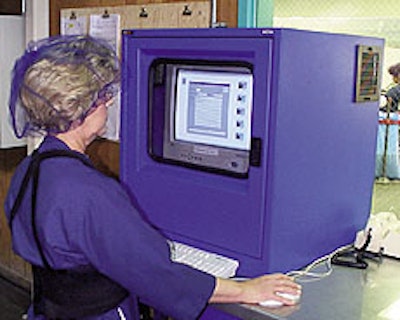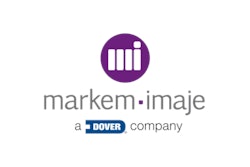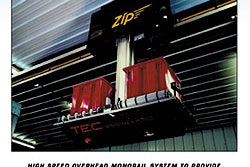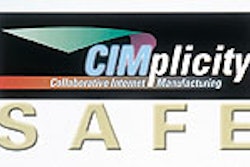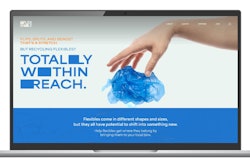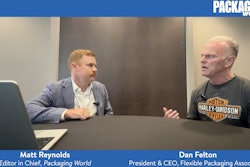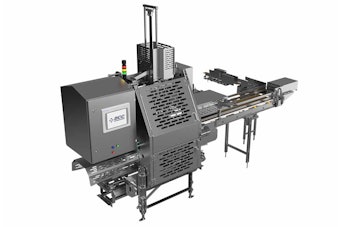Networked case coding equipment is nothing new for Blue Diamond Growers. But last spring, when the Sacramento, CA-based nut cooperative replaced some aging case coders with five new units from Markem (Keene, NH), it also added a network to link them all together. This network is superior to its predecessor in at least two critical ways: One, rather than creating separate print “recipes” for each case for each printer as it had to do previously, Blue Diamond can store them all on a single database. Secondly, that information is available to each coder.
“With the previous network we were able to ‘talk’ between a PC and different printers, but each message had to be created and sent down to each printer as a unique message,” says Bob Krull, Blue Diamond’s systems specialist engineer. “Now, we use a generic message and send it down to all five printers, so that’s five times fewer messages we have to create.”
The second key advantage with the new network is that each message is kept in a common database compared to the previous network where each message required a separate file. “All the messages are stored on a central repository on the PC,” Krull explains. “You don’t have to rename each message for each printer. Instead, you put in a message number, in our case a four-digit number, and boom, it goes to the PC, which downloads it to the printers. Also, if there are any variables, such as a special date code for a customer, it prompts the printer to add that number. Before, we had to go in and create a special message every day, so this system saves us a lot of time.”
Specifically, it amounts to as many as 40 hours per year. Not a lot of time, Krull admits, “but it keeps building up.” It also reduces the potential for human errors.
How it works
Krull explains, “We run a Windows™ NT local area network here at our plant, and we’ve hooked it up so that we can program from a desktop PC and set up new messages and print formats for all the coders.” The Markem Model 5000 coders were added early last year (see August ‘01, p. 94, or packworld.com/go/bdg).
All five coders are daisy-chained together via RS-485 serial connections, according to Krull. “There’s only a single cable going out the back of the PC. The communications path goes from the first printer to the second, third, fourth, and the fifth, which has a termination block on it that says it’s the last printer in line.”
More than 200 case code messages are stored on the central PC. Blue Diamond continues to expand that list. Each of these messages is developed and maintained in a Microsoft Access “Item” master database. Blue Diamond uses Markem’s Composer image design software to maintain fixed and variable formats, or templates, that accept these messages from the database.
Once fields have been defined, a Blue Diamond operator can go to an individual printer and download a specific case message from the database. A Markem-supplied CimControl network manager runs and maintains the network, handling two-way communication between the PC and each printer.
In operation, Krull or another authorized Blue Diamond employee uses the Composer program on any PC operating on the company’s local area network (LAN) to create print formats. Product-specific details such as a bar code or product description are retrieved from the Item database.
When Blue Diamond wants to add a unique variable for a specific customer, it can do so at any of the five printers. To do that, an operator enters the request at the printer control panel. The CimControl triggers a search of the database for that specific code. Once that code is located, all information for that code is read from the database, inserted into the appropriate Composer template, with the compiled information returned to the 5000 printer. An operator then enters the unique information and saves it to the database. The new information can then be imaged and prepared for printing.
Future flexibility
Krull is pleased that the system was not only easy to set up, but easy to update as needed. “I can go into the Item master database at any time to manipulate it. I can create or check print messages from my desk, without having to go over to the printing units. It’s also easy to back up to a separate file server in our Information Systems Department, which is where our computer department and servers are located. We can set it up to back up at two in the morning after all the shifts are done.”
Looking toward the future, Krull notes, “We could hook up to 30 lines with the same networking system,” he notes. The system also adds flexibility. “We’re looking at using this same network for coders” made by other suppliers, Krull explains. He adds, “Markem makes other printers for primary packages,” that could also be added to the network. And the nut cooperative could open communications between the coders and other packaging equipment on the lines, though that’s not a current priority.
“We’re looking at different options that might allow us to print on foil for primary packaging, and we’re also considering connecting the printers directly via our Ethernet-based LAN,” says Krull. “Right now, each printer is located about 30 feet apart, though within the same pack-out area in the building. By using the Ethernet, we wouldn’t need to run a cable from our last printer all the way over to another production area more than 1ꯠ feet away. Instead, we could use the local wiring that’s already in place with the Ethernet, instead of running new cables.”
Whatever changes it makes, Blue Diamond is confident that its supplier will be ready to help. “The system has worked really well for us,” Krull concludes. “It’s running so smoothly that I haven’t had to talk with anyone from Markem other than to touch base and say hello, but I know from experience that whenever I’ve had a question or concern, they’ve responded immediately.”
